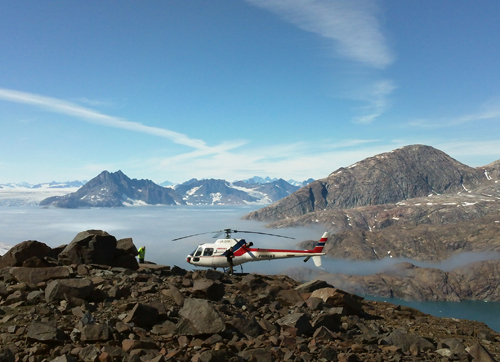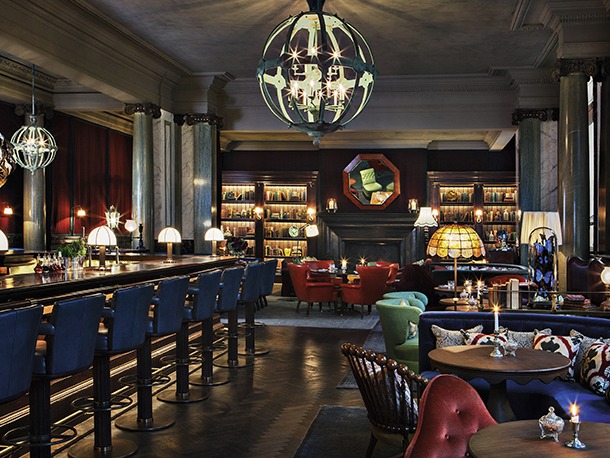
For many years South Africa has been the repository of the world’s platinum group metals (PGM’s), with some 80 percent of the globe’s total production of metals such as platinum, palladium, osmium, iridium, rhodium, and ruthenium originating from within the Bushveld intrusion, a large layered igneous intrusion within the Earth’s crust.
While it remains a fundamentally important site for mining Bushveld, like all good things, is not quite as exciting as it once was. This is a result of several factors, from the recent labour issues that have affected vast swaths of the South African mining sector to the simple fact that it has become necessary to mine deeper, and at greater expense, here than ever before. With the site slowly becoming less attractive to companies their attention has turned to identifying other stable supplies of PGMs. It is here that the country of Greenland displays its significance.
“Greenland is unquestionably Europe’s last frontier for mining exploration,” states CEO and Managing Director, Robert Mosig. “Geologists are becoming increasingly excited by the signs of mineralisation that the country is starting to display. Indeed, Greenland represents a veritable sweet shop of all manner of minerals, from PGMs to diamond, silver, zinc and uranium.”
Based in Queensland and listed on the Australia Stock Exchange since May 2006 (ASX:PGM), Platina Resources Limited is an international resource company focused on the exploration and development of a global portfolio of precious and specialty metal projects. Away from its home market, where its assets include the Owendale Platinum and Scandium Project and the Munni Munni Platinum Group Metal (PGM) Project, the company also owns 100 percent of the Skaergaard Gold and Platinum Group Metal (PGM) Project as well as the Miki Fjord exploration licence in Greenland.
Located on the East Coast of the country and covering a total area of 141 square kilometres, the Skaergaard Gold & PGM Project is Greenland’s largest gold resource. “Here,” Mosig continues, “we have an Inferred Resource of something in the order of 1.7 million ounces of gold and approximately half a million ounces of platinum and palladium.”
Impressive as these figures are, Mosig is keen to highlight that this is just a snapshot of Skaergaard’s potential. “When we initially looked at the project it was estimated that the Skaergaard intrusion could hold as much as 30 million ounces of palladium in total.” There are a large number of drill holes that Platina has tested that are in fact excluded from the resource at this time. These holes have shown themselves to be in possession of significant quantities of platinum, palladium and gold. What the company is doing now is working diligently to carry out all the necessary QA/QC work to have these holes incorporated into the resource, giving it massively re-evaluated statistics.
“Once this has been achieved,” Mosig explains, “we intend to work extremely rapidly to develop the Skaergaard project up, very much along the same lines as to how we have nurtured and developed our operations in Australia. We are very keen to be a component of exploration and development in Greenland, and the growth of this particular project will be vital in achieving that goal.”
It is the company’s hope that this re-evaluation will go a long way to making what would probably be described by many as a modest resources a truly world-class asset. What makes Skaergaard “even more deliciously exciting”, as Mosig puts it, is the fact that the project lies just 400 kilometres away from the geo-thermal power rich nation of Iceland. “We believe it is this association between an untapped set of resources and a repository of cheap power that make our Greenland projects so formidable.”
Adjacent to Skaergaard one will find the Miki Fjord licence. Covering a 1,255 square kilometre area of the East Greenland Igneous province, the area is broken up into two significant regions, the Kangerlussuaq Complex and the Miki Fjord Dyke.
The Kangerlussuaq Complex is a 1,000 square kilometre circular target, prospective for precious, base and rare earth metals. The Miki Fjord Dyke meanwhile is a steeply dipping linear dyke that begins only two kilometres from Skaergaard and extends for more than 55 kilometres varying in width from 20 to 600 metres, and is believed to be highly prospective for gold and base metals.
The vast majority of Platina’s work today is geared specifically towards building the first PGM mine in Greenland. In working to reach this goal the company has been extremely grateful for the support it has received from the Bureau of Minerals of Petroleum (BMP). “From our perspective,” Mosig says, “it has been very refreshing to experience BMP’s appropriate and tolerant view of supporting exploration, whilst at the same time maintain the pristine nature of Greenland’s environment. This is certainly an approach that we believe should be adopted in other parts of the world.”
Mosig readily admits that in many ways he and his company have been blessed by being present in the midst of Australia’s mining boom. Indeed it is the experiences he has had during this time that makes him even more excited about Greenland’s immediate and long-term future.
“Greenland is, and will continue to be, the focus of the next boom in mining,” Mosig concludes, “and as such operations it will be a major focal point for the industry going forward. Unquestionably there are going to be dramatic new discoveries here and that many exciting things are poised to happen in the coming months. We at Platina are delighted to be playing its part in this next era of mining and we are very keen to continue our work here for many years to come.”
Written by Will Daynes, research by Richard Halfhide
DOWNLOAD
 Platina-Greenland-SPR-Bro-s.pdf
Platina-Greenland-SPR-Bro-s.pdf













